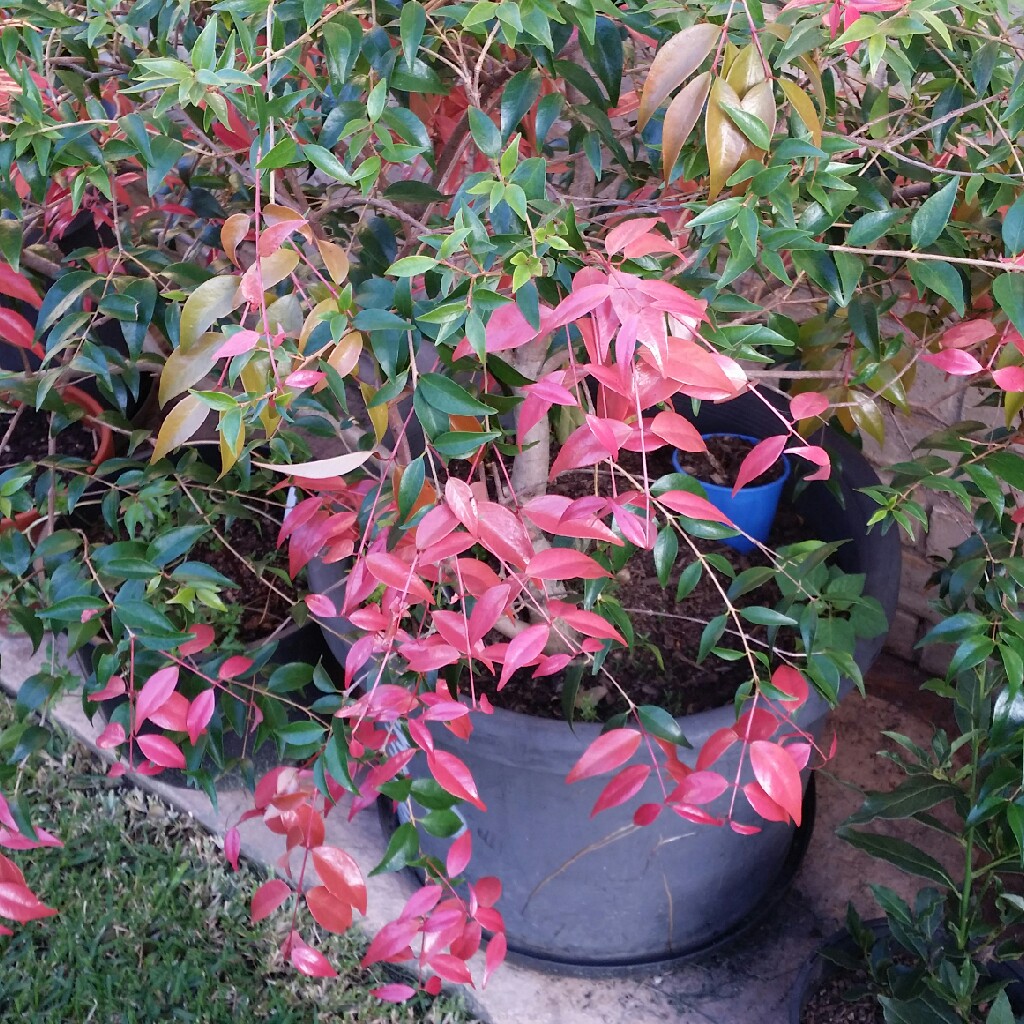
Syzygium luehmannii
Riberry Lilly Pilly
Syzygium are typically grown as ornamental plants for their attractive glossy foliage. Some varieties produce edible fruit that are eaten fresh or used in jams and jellies. It has a multitude of uses. It is evergreen, has dense foliage, and grows rapidly to a height of up to 4 m if left unchecked. Syzygiums are sensitive to extreme cold and frost, but will grow almost anywhere. Syzygium luehmannii is a medium sized ornamental rainforest tree with glossy green foliage that can be used for hedging, shade and for screening and wind breaks. It has large decorative pink to red fruit that can be eaten straight from the plant. Flowers in summer with fluffy cream flowers.
Contributed by @KathyB
-
Full sun to partial shade
-
Very little water
-
Frost Hardy: 23F (-5°C)
-
Moist and free draining
Common name
Riberry Lilly Pilly
Latin name
Syzygium luehmannii
type
Evergreen Shrub
family
Myrtaceae
ph
5.0 - 7.5 Acid - Neutral
Plant & bloom calendar
-
Best time to plant
full grown dimensions
 12.50 M
20.00 M
12.50 M
20.00 M
Syzygium luehmannii
Syzygium are typically grown as ornamental plants for their attractive glossy foliage. Some varieties produce edible fruit that are eaten fresh or used in jams and jellies. It has a multitude of uses. It is evergreen, has dense foliage, and grows rapidly to a height of up to 4 m if left unchecked. Syzygiums are sensitive to extreme cold and frost, but will grow almost anywhere. Syzygium luehmannii is a medium sized ornamental rainforest tree with glossy green foliage that can be used for hedging, shade and for screening and wind breaks. It has large decorative pink to red fruit that can be eaten straight from the plant. Flowers in summer with fluffy cream flowers.
Planting young plants
From Early Spring TO Early Spring
Plant in full sun or in shade. A well-drained, fertile soil is ideal. To plant as a hedge, it is best to dig a trench instead of individual planting holes. This will help you plant the hedge in a neat straight row. Mix the extracted topsoil with a mixture of compost and bone meal. Also place several spades of compost and bone meal in the ditch and mix it with the sub-soil. Place the young plants in the trench, about 50 cm to 1 m apart, and at the same depth they were growing in their nursery pots. Fill with the enriched topsoil and water immediately, then keep the soil moist until you see the first signs of growth.








